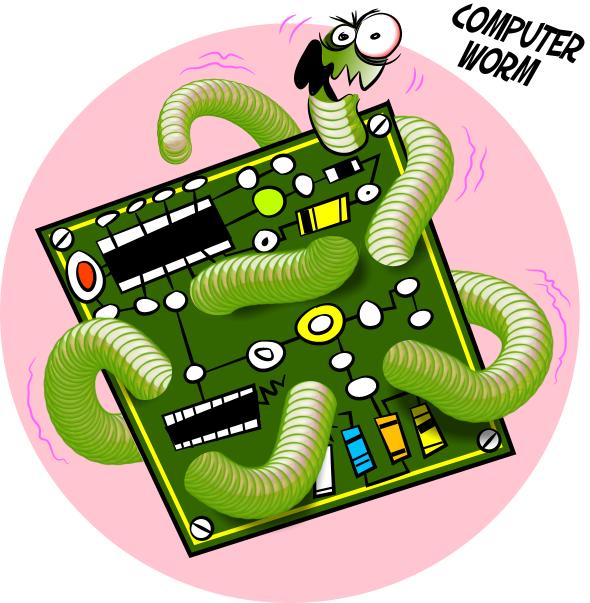About Me
- venux
- im just ordinary people who love IT so much
Followers
page view
hits
venux. Powered by Blogger.
Monday, 17 January 2011
Worm
Computer worms (worm) in computer security, is a computer program that can reproduce itself by itself within a computer system. A worm can reproduce itself by utilizing a network (LAN / WAN / Internet) without interference from the users themselves. Worms do not like a regular computer virus, which multiplies by inserting the program itself to existing programs in the computer, but the worms exploit a security hole that is open, or better known as vulnerability. Some worms also consume the available bandwidth. Worm is an evolution of computer viruses. Only one way to overcome the worm is to close the security hole open, with how to update a patch or service pack of the operating system used with the patch or the most recent Service Pack.
A computer virus can indeed infect files in a computer system, but the worm can do it better. In addition to spread within a system, the worm also can spread to many systems through networks connected to the infected system. Some worms, also can include a virus code that can destroy files, steal documents, e-mail, or do other destructive things, or just make the infected system is useless.
Some examples of the worm are as follows:
* ADMw0rm: The worm that can do the exploitation of network services the Berkeley Internet Name Domain (BIND), by doing a buffer-overflow.
* Code Red: Worm that can make the exploitation of the service Internet Information Services (IIS) version 4 and version 5, with a buffer-overflow attacks.
* Loveletter: worm that spreads by sending itself via e-mail to all accounts listed in the Address Book or Microsoft Outlook Express / Microsoft Outlook contacts list in the code by using Visual Basic Script (VBScript).
* Nimda
* SQL-Slammer
A computer virus can indeed infect files in a computer system, but the worm can do it better. In addition to spread within a system, the worm also can spread to many systems through networks connected to the infected system. Some worms, also can include a virus code that can destroy files, steal documents, e-mail, or do other destructive things, or just make the infected system is useless.
Some examples of the worm are as follows:
* ADMw0rm: The worm that can do the exploitation of network services the Berkeley Internet Name Domain (BIND), by doing a buffer-overflow.
* Code Red: Worm that can make the exploitation of the service Internet Information Services (IIS) version 4 and version 5, with a buffer-overflow attacks.
* Loveletter: worm that spreads by sending itself via e-mail to all accounts listed in the Address Book or Microsoft Outlook Express / Microsoft Outlook contacts list in the code by using Visual Basic Script (VBScript).
* Nimda
* SQL-Slammer
Subscribe to:
Post Comments (Atom)


0 comments:
Post a Comment